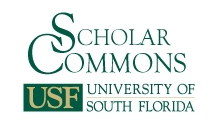Abstract
This article utilizes the case study of the 1930s Ukrainian Holodomor, an artificially induced famine under Joseph Stalin, to advance comparative genocide studies debates regarding the nature, onset, and prevention of large-scale violence. Fieldwide debates question how to 1) distinguish genocide from other forms of large-scale violence and 2) trace genocides as unfolding processes, rather than crescendoing events. To circumvent unproductive definitional arguments, methodologies that track large-scale violence according to numerically-based thresholds have substituted for dynamics-based analyses. Able to address aspects of the genocide puzzle, these methodologies struggle to incorporate cross-cultural contextual variation or elicit ripe moments for specific, real-time interventions. Demonstrating how genocide’s precise, changing dynamics can be mapped over its duration, I present and apply a new mixed methods methodology, affirming that historical cases can inform modern prevention efforts. By coding 1932–1933 Ukraine-specific correspondences to/from Stalin, I pinpoint the precise moment when genocidal intent and victim selection overlaps.
Acknowledgements
I am appreciative of Drs. Ernesto Verdeja, Rahul Oka, George Lopez, Vania Smith-Oka, Agustin Fuentes, and Serhii Plokhii for their helpful feedback which strengthened earlier drafts this manuscript. This article was also improved by the University of Notre Dame's Kroc Institute for International Peace Studies writing seminar and the Holodomor Research and Education Consortium's research brownbag, and I would like to thank each of these participants for their comments and suggestions. This article greatly benefitted from research and translational assistance from Oksana Yanchuk. Data collection for this article was funded by the National Science Foundation’s Graduate Research Fellowship Program (NSF-GRFP), USAID Research and Innovation Fellowship program, Kroc Institute for International Peace Studies, Notre Dame Anthropology Department, Kellogg Institute for International Studies, Nanovic Institute for European Studies, the Holodomor Research and Education Consortium, and a U.S. Fulbright scholarship. I am appreciative of each of these funding programs for making this research possible. Data collection for this article was funded by the National Science Foundation’s Graduate Research Fellowship Program (NSF-GRFP), USAID Research and Innovation Fellowship program, Kroc Institute for International Peace Studies, Notre Dame Anthropology Department, Nanovic Institute for European Studies, Kellogg Institute for International Studies, and a U.S. Fulbright scholarship.
DOI
https://doi.org/10.5038/1911-9933.15.2.1809
Recommended Citation
Hook, Kristina
(2021)
"Pinpointing Patterns of Violence: A Comparative Genocide Studies Approach to Violence Escalation in the Ukrainian Holodomor,"
Genocide Studies and Prevention: An International Journal:
Vol. 15:
Iss.
2:
10–36.
DOI:
https://doi.org/10.5038/1911-9933.15.2.1809
Available at: https://digitalcommons.usf.edu/gsp/vol15/iss2/5
Creative Commons License

This work is licensed under a Creative Commons Attribution-Noncommercial 4.0 License
Included in
Eastern European Studies Commons, Holocaust and Genocide Studies Commons, Other Anthropology Commons, Other Political Science Commons, Social and Cultural Anthropology Commons, Soviet and Post-Soviet Studies Commons



